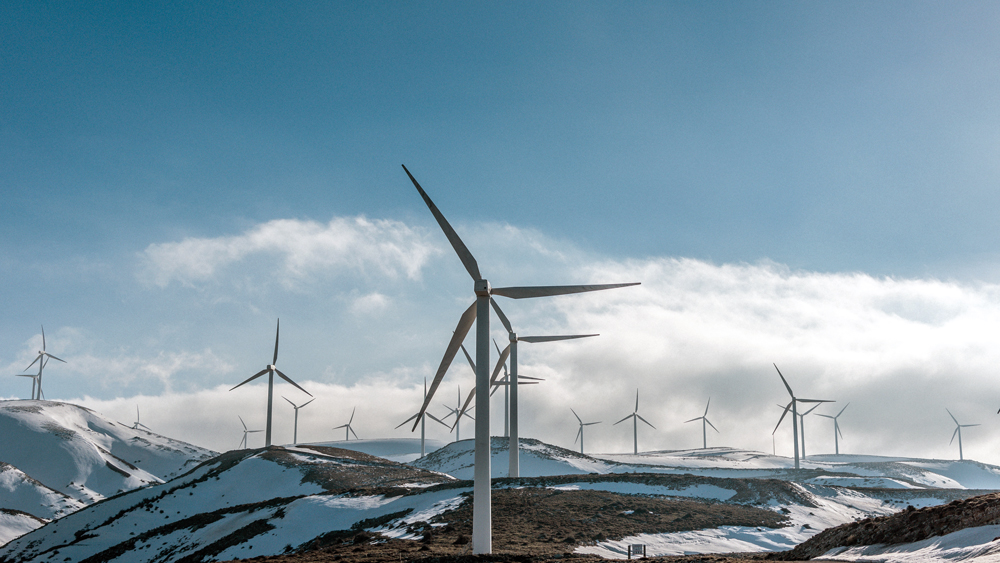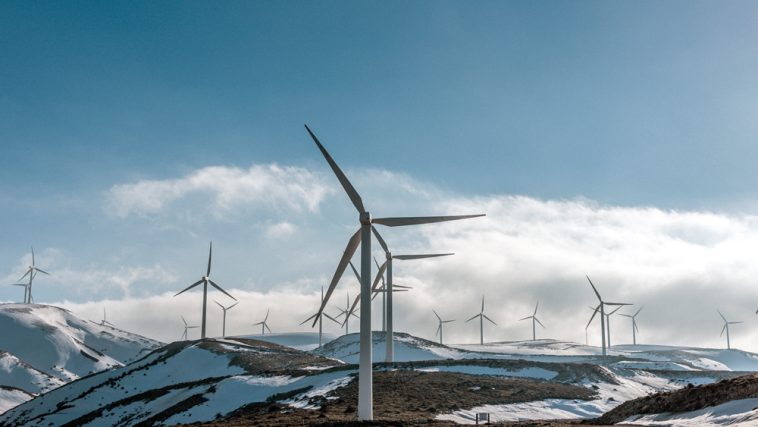
Renewable Energy and Food Security in the Arctic: A New Frontier for Sustainable Development
The Arctic’s isolated landscapes and extreme climates present a unique challenge when it comes to securing essential energy and food resources. As nations around the world push for sustainable progress, the region’s approach to renewable energy and food security is emerging as an essential blueprint for balancing traditional lifestyles with modern technological advances. In this opinion editorial, I will take a closer look at the tangled issues of energy transitions, food self-sufficiency, and the pivotal role renewable sources can play in transforming life in the Arctic.
Unlocking the Arctic’s Renewable Energy Potential
Many Arctic communities have relied on imported fossil fuels to meet their energy needs—a practice that is not only expensive but also harmful to the environment. With abundant wind, solar, geothermal, marine, and hydrokinetic resources, the Arctic holds a promising array of renewable energy alternatives. However, making a successful shift from diesel dependency to distributed renewable systems comes with its own set of tricky parts and subtle details.
Key renewable energy resources in the Arctic include:
- Wind power: Strong, consistent winds make this an attractive option, particularly for remote settlements.
- Solar energy: The near-continuous daylight during summer holds untapped potential, although storing energy through the dark winter months remains a challenge.
- Geothermal energy: In regions with volcanic activity, geothermal resources can provide both heat and electricity.
- Hydrokinetic power: Small-scale hydroelectric projects along Arctic rivers offer localized energy solutions.
While these options are promising, the fine points of integrating them into existing energy grids require careful evaluation. Technical compatibility, equipment durability in extreme cold, and the challenges of transporting materials to remote locations make each project a nerve-racking yet exciting venture toward an energy-independent future.
Integrating Renewable Energy with Local Food Production
Food security in the Arctic is intimately connected with energy systems. With a heavy dependence on imported foods and a disrupted supply chain due to harsh winter conditions, local food production is both a necessity and a potential catalyst for community resilience. Incorporating renewable energy into greenhouse operations and year-round containerized farming offers a pathway to reducing these dependencies.
Energy-powered greenhouses, for example, not only enhance local crop production but also help drive down emissions by reducing the need for long-haul transportation of food. Besides, they serve as hubs for community interaction and technical learning, paving the way toward greater food self-sufficiency. The success of these measures depends on overcoming the overwhelming challenges associated with establishing and maintaining such systems in remote and extreme environments.
Challenges in Transitioning: Overcoming the Tricky Parts
The process of shifting from fossil fuels to renewable resources in the Arctic is filled with twists and turns that can feel particularly overwhelming. The key obstacles include:
- Technical hurdles: Many communities need custom-made solutions to integrate new renewable systems into old infrastructural frameworks. With winter temperatures plummeting and equipment often prone to malfunctions, the field is replete with intricate issues that must be carefully addressed.
- Human capital limitations: Upgrading technology in remote settings requires technical training and experienced project managers to guide and support local workers. Without sufficient training, even the best-designed system can face a host of confusing bits during operation.
- Economic constraints: Fossil fuel subsidies and high initial capital outlays for renewable systems form a tangled maze of economic challenges that can make the transition seem almost intimidating.
- Social and political factors: Community mistrust—often stemming from past government initiatives—and concerns over cultural sustainability make it critical that local voices lead the conversation. Successful projects are built on clear communication, second-to-none community involvement, and shared benefits.
Addressing these challenges requires that policymakers, industry leaders, and community stakeholders work together to find your way around these obstacles and tailor solutions that fit the local context.
Case Studies from the Frontline: Lessons from Alaskan Communities
Looking at real-life examples provides important insights into how different communities are working through the twists and turns of their renewable energy journeys. Alaskan communities such as Galena, Kotzebue, Shungnak, Kobuk, Kodiak, and Kongiganak have taken bold steps in integrating renewable energy and reducing dependency on diesel fuels.
Galena: In Galena, biomass heating has become a key player in supplying energy to local schools and community centers. Despite technical glitches such as equipment malfunctions in extreme cold, strong community involvement has overcome these complications to keep the system running.
Kotzebue: Kotzebue stands as a prime example of how combining wind and solar energy with initial large battery storage can significantly lower the costs associated with diesel dependency. With proper training programs in place, local technicians have mastered the subtle parts of operating hybrid energy systems.
Shungnak and Kobuk: These communities have teamed up as an independent power producer, integrating solar, wind, and heat pump technologies to create a more resilient power supply. Their approach focused on leveraging local data, fostering strong supplier relationships, and achieving incremental technological improvements.
Kodiak: Kodiak has transformed from heavy diesel reliance to a predominantly renewable system by carefully integrating local hydropower with a supplemental wind component. This project highlighted the small distinctions between technical reliability and operational economics, showing how even minor adjustments can result in major energy savings.
Kongiganak: In response to an oil price shock, Kongiganak took decisive steps by forming a cooperative to build local wind energy capacity. Their experience underscores the importance of training local talent and building sustainable partnerships—a model that can be replicated in other regions of the Arctic.
Renewable Energy Success Stories Beyond Alaska
The transformation of Arctic communities is not limited to Alaska alone. Regions in Canada (Iqaluit), Russia (Tiksi), and the Faroe Islands are also offering valuable lessons in using renewable energy to fight food insecurity and boost local economies.
Iqaluit, Nunavut: Iqaluit is largely dependent on diesel fuel for its energy and transport needs. Federal initiatives such as the “Indigenous Off-Diesel Initiative” are beginning to bridge this gap, though the aging infrastructure remains a serious stumbling block. The situation in Iqaluit emphasizes how a mix of federal support and local ingenuity is critical to making progress.
Tiksi, Russia: Tiksi has implemented a hybrid energy model that combines diesel with wind power and energy storage. This balanced, albeit cautious, shift away from oil dependence exemplifies how communities can reduce diesel consumption while still maintaining a dependable energy supply.
The Faroe Islands: With ambitions to achieve 100% renewable electricity by 2030, the Faroe Islands have attracted international investors and implemented wind, tidal, and hydropower projects. Their forward-thinking strategies demonstrate that even remote regions can take their place among modern, sustainable energy frontrunners.
Evaluating the Impacts on Indigenous Communities and Cultural Practices
One aspect that often gets overlooked in discussions about renewable energy in the Arctic is the delicate balance with Indigenous rights and cultural conservation. For communities such as the Sámi people in Norway, decisions about renewable energy infrastructure carry not only economic and environmental implications but also significant cultural ones.
Renewable projects have sometimes led to unintended negative consequences for local Indigenous practices. For example, large wind farms or hydropower installations may block traditional migration routes and disrupt reindeer herding—a cornerstone of Sámi culture. As these communities face the nerve-racking dilemma of sacrificing tradition for progress, they call for a balanced approach that respects their rights while encouraging sustainable development.
The way forward entails integrating local Indigenous knowledge with modern technological insights. Meaningful community consultation is essential to ensure that renewable energy projects work in tandem with cultural preservation, thereby providing a model for sustainable development that honors the land and its people.
Food Security in an Arctic Context
Food scarcity is a longstanding concern in the Arctic. The combination of isolated locations, harsh climatic conditions, and escalating dependency on imported food has fostered a situation riddled with issues. Many Indigenous communities—and their ways of obtaining food through hunting, trapping, and gathering—face a growing threat as climate change alters local ecosystems.
For local food production to thrive, communities must grapple with several overwhelming challenges:
- Infrastructure limitations: Many communities lack proper food storage, processing facilities, and distribution networks that can handle local production at scale.
- Economic vulnerability: High transportation costs and the price of imported foods exacerbate food insecurity, making locally produced items not only beneficial for sustainability but also economically smarter.
- Climate change dynamics: As traditional food sources become scarcer due to warming temperatures, the need for innovative, renewable energy-powered food production systems grows more critical.
- Environmental concerns: Waste, contamination, and fluctuating weather patterns add layers of complicated pieces that require management and technical finesse.
In this light, it becomes clear that renewable energy and food security are not separate issues but rather intertwined components of a broader strategy to boost community resilience. Innovations such as heated greenhouses powered by renewable sources can significantly enhance local food production while simultaneously reducing energy costs and environmental footprints.
Energy Trade-offs: Weighing Benefits Against Environmental Impacts
As the Arctic explores various renewable energy sources, it is important to consider both the potential benefits and the trade-offs associated with these technologies. Transitioning away from fossil fuels offers significant environmental advantages; however, every mode of renewable energy comes with its own set of fine points and hidden complexities.
For instance, while wind turbines are a critical component of many renewable projects, their installation must be carefully planned to avoid disrupting local wildlife and animal migration patterns. Hydroelectric installations, though relatively clean, can alter water ecosystems if not thoughtfully sited. These trade-offs are a reminder that even green solutions are not free from challenges, and each project requires a delicate balancing act between efficiency, environmental impacts, and local cultural contexts.
A comparative overview of some key environmental considerations is presented in the table below:
| Energy Source | Key Benefits | Potential Challenges |
|---|---|---|
| Wind Power | Abundant winds; reduced emissions | Potential disruption of bird/mammal migration routes; noise concerns |
| Solar Energy | Effective in long daylight periods; scalable | Storage issues during dark months; space requirements |
| Geothermal Energy | Stable heat source; low emissions | Limited to geologically active regions; site-specific |
| Hydrokinetic Energy | Utilizes flowing water; renewable | Potential impacts on aquatic ecosystems; variability with water flow |
Fostering Collaboration: Sharing Knowledge Across Remote Regions
Given the unique circumstances each Arctic community faces, there is great value in fostering regional cooperation and sharing effective solutions. Despite the geographic remoteness, numerous communities are finding that working through the overwhelming problems of energy transition together makes a significant difference.
Collaborative projects allow small utilities and residential prosumers to pool resources, share insights from local experiences, and strengthen community bonds. Projects such as the joint renewable initiatives in Shungnak and Kobuk illustrate how the simple act of pooling local expertise can turn a challenging journey into a model for success across the Arctic.
Key benefits of regional collaboration include:
- Shared best practices: Learning from past projects helps communities avoid repeated mistakes and address the fine points of technical integration more confidently.
- Resource optimization: Collaborative funding and joint procurement can lower costs and minimize risks associated with importing expensive technology.
- Increased political leverage: A unified voice in energy policy can nudge federal and regional governments to prioritize investments in sustainable infrastructure.
By taking a closer look at these collaborative models, it becomes evident that knowledge sharing is not only feasible but essential for ensuring that each community finds its own way around the twisted economic and technical hurdles of renewable energy implementation.
Policy Imperatives and Financial Support Mechanisms
The momentum toward renewable energy in the Arctic also hinges on smart, supportive policies and robust financial mechanisms. Governments must work hand in hand with the private sector and local communities to create favorable conditions for the transition. Federal programs—like subsidies tailored to renewable energy initiatives and grants for local training—can reduce the intimidating financial risks that many communities face.
In designing these policies, it is important to address several core elements:
- Incentives for renewable systems: Financial rewards and tax incentives can lower the initial capital barriers and promote rapid adoption of new technologies.
- Investments in infrastructure: Building robust energy grids and transport systems is key to ensuring the smooth integration of renewable solutions.
- Support for local capacity building: Funding training programs to equip community members with the skills required to manage maintenance and operation is essential for long-term sustainability.
- Environmental and cultural safeguards: Policies need to ensure that renewable energy projects do not come at the expense of local ecosystems and Indigenous rights.
With the right policy framework, these measures can collectively help Arctic communities chart a successful course toward energy independence and food self-sufficiency.
The Road Ahead: Balancing Tradition with Innovation
Despite the overwhelming challenges and nerve-racking uncertainties, the Arctic stands at the threshold of a significant transformation. Integrating renewable energy not only promises cost savings and environmental relief but also offers a pathway to preserving traditional ways of life through enhanced local food production.
Achieving this transformation, however, requires a careful balancing act between modern technological innovations and the preservation of cultural heritage. Indigenous communities have cultivated a deep, nuanced relationship with their environment; any sustainable energy project must respect and integrate these traditions rather than override them.
In many cases, successful projects have demonstrated that this balance is possible when local voices are involved at every stage—from planning and design to implementation and maintenance. As countries like Iceland, Norway, and Sweden continue to lead the charge, other Arctic regions can draw valuable lessons from both their successes and their challenges.
Key Takeaways for a Sustainable Arctic Future
There are several essential messages to extract from the evolving landscape of Arctic renewable energy and food security initiatives:
- Local Adaptation: Tailor renewable energy systems and food production facilities to meet the specific environmental and cultural needs of each community.
- Technical and Economic Coordination: Overcome economic and system integration challenges by focusing on community-led training, proper equipment selection, and smart financing.
- Protecting Indigenous Rights: Ensure that the shift to renewable energy does not come at the cost of traditional livelihoods and cultural practices.
- Collaborative Innovation: Strengthen regional alliances to share fine shades of knowledge, optimize resources, and navigate the tangled issues that come from transitioning away from fossil fuels.
Ultimately, the path to a self-sufficient, renewable-powered Arctic is not a one-size-fits-all solution. It requires a mix of localized technical solutions, strategic regional cooperation, and supportive policy frameworks to successfully steer through the many challenges that lie ahead.
In Conclusion: A Call for Collective Action
The Arctic’s future depends on overcoming a host of intimidating challenges—from isolated infrastructures and unpredictable climates to economic vulnerabilities and cultural tensions. Yet, the promise of renewable energy in the region is too significant to ignore. By upgrading local energy systems, investing in renewable-powered agriculture, and ensuring that Indigenous voices are at the center of development plans, Arctic communities can build a brighter, more sustainable future.
As global attention shifts toward achieving sustainable development goals, it is clear that the Arctic holds both a challenge and an opportunity—a chance to redefine how isolated, cold communities can thrive in a warmer, less dependent world. With the right mix of community participation, smart policy, and tailored technology, the Arctic can not only meet its own energy and food needs but also serve as an inspiring model for sustainable development in extreme environments worldwide.
In closing, it is essential that stakeholders—from local residents and community leaders to government policymakers and private industry—continue to work together to find a path through the confusing bits and delicate twists of renewable energy transition. By embracing local ingenuity, fostering regional collaborations, and never losing sight of the cultural heritage that makes the Arctic unique, we can build a future that is both clean and resilient. Only with such a concerted effort will Arctic communities move confidently toward a future of energy independence and robust food security.
This editorial calls on all who care about sustainable development and social justice to take a closer look at the Arctic’s renewable energy revolution. The challenges are many, and the journey is full of tricky parts, but with persistence and collective action, the Arctic can light its way and show the world how to balance progress with preservation in even the most extreme corners of our planet.
Originally Post From https://www.nature.com/articles/s44264-025-00079-9
Read more about this topic at
Renewable Energy
Arctic Sustainable Energy Futures Toolkit


